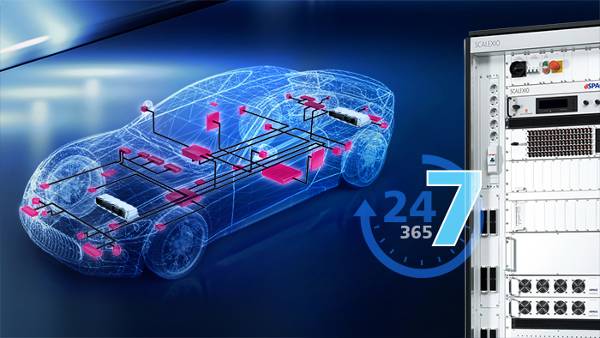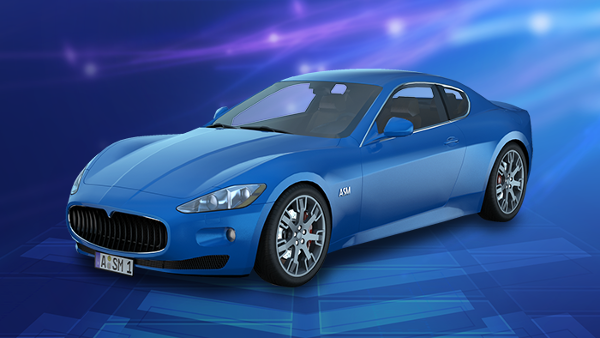When it comes to simulation and validation, the Shanghai Motor Vehicle Inspection Certification & Tech Innovation Center, or SMVIC for short, is well positioned for the future. Recently, the SMVIC was entrusted with the task of comprehensively testing safety-related components of the Big Ant vehicle from Chinese manufacturer Chery. Chery's goal was to map the complete validation from sensor to actuator, across various test scenarios.
Scope of Testing
The SMVIC is a Chinese government organization whose overriding goal is to improve safety on Chinese roads. The focus of the tests was therefore on driver assistance system (ADAS) functions on the one hand and general vehicle safety on the other. This includes hardware-in-the-loop (HIL) testing of ECUs, sensor testing with raw sensor data, and over-the-air stimulation, as well as the mechanical testing of steering and braking systems. All of these tests took place as part of an integration test: A HIL simulation environment that simulated the entire outside world was used to send data synchronously to all individual components.
Remote Commissioning
During commissioning, project managers faced travel restrictions imposed by Corona. The solution: Much of the handover from dSPACE to the SMVIC team took place virtually. Both sides used videoconferencing to clarify key points. In addition, a dSPACE China engineering employee was on site to carry out the final steps of the handover. dSPACE project manager Henning Elbers commented on this type of cooperation: "Coordination also worked excellently in this way. dSPACE had already used webcams during precommissioning to explain all the details to the SMVIC. Onsite, a dSPACE China colleague performed the setup. In order to identify and solve problems at an early stage, the project committee met weekly. In my opinion, this was very useful in this project." Xianchao Zhang, ADS Simulation Advanced Engineer at SMVIC, was also convinced by this kind of cooperation: "This type of collaboration saves time and effort. It worked well during the pandemic period of COVID-19."
Solutions Found
The aim was to perform an integration test in which all the ECUs of a vehicle are security-checked together. To do this, they were connected to a virtual vehicle based on dSPACE Automotive Simulation Models (ASM), which is simulated in real time on a HIL simulator, together with the vehicle environment. In order to include components such as actuators and sensors in the test in addition to the ECUs, the simulator was supplemented by appropriate extensions. For example, a physically accurate environment simulation with dSPACE AURELION for the lidar and camera sensors was to be carried out, and the simulated sensor raw data had to be injected. In addition, a radar sensor was tested using the over-the-air (OTA) method. Furthermore. there were also tests that focused on mechanical components. On the one hand, the Big Ant's steering system was tested on a test bench. On the other hand, the SMVIC also subjected the brake to numerous tests on a braking test bench.
Radar Tests on the Physical Level
To perform the tests of the radar sensor, a Radar Test Bench - Compact 3D was used to realize over-the-air simulation of radar targets during virtual driving scenarios. The unmodified radar sensor was installed in the test bench and stimulated with generated radar echoes. This was achieved by four dSPACE Automotive Radar Test Systems (DARTS) installed in the test bench. With this test bench, it is possible to simulate radar targets with programmable distance, speed, size, and angle. The OTA method allows black-box testing of the radar sensor considering the complete chain of effects. The output of the radar sensor is further processed by the ADAS and used to actuate the steering or braking systems – fully closed-loop and in real-time through dSPACE ASM. Xianchao Zhang on the benefits: “With DARTS and dSPACE Radar Test Bench, we were able to test radar sensors for safety-relevant criteria in complex traffic scenarios with critical driving situations. They help us to fulfill the tasks required by law efficiently and in easily verifiable manner.”

Automotive Simulation Models (ASM) were used to add realistic traffic scenarios and fill the virtual world with vehicles that can be detected by the radar, camera and lidar sensors.
Lidar and Camera Simulation
The camera sensors were tested by so called raw data simulation and the lidar sensor is simulated on point-cloud level. With the physics-based rendering and the extended 3D point cloud as two core elements of dSPACE AURELION, the sensor-realistic simulation is the most efficient way of generating the sensor raw data required for this. The basic premise behind sensor-realistic simulation is that sensor models mimic real sensors by generating the same kinds of data. This data is converted into electrical signals to simulate the camera and lidar sensors. As part of the HIL system, three high-performance Sensor Simulation PCs connected to dSPACE Environment Sensor Interface (ESI) units did the job for the lidar and camera sensors – synchronized. Xianchao Zhang commented: “The realistic sensor simulation from dSPACE is a major improvement in lidar and camera sensor validation. The flexibility and quality of the simulation fulfills our requirements."
Steering and Brakes Put Through Their Paces
With the steering test bench, the SMVIC has a mechatronic test environment with which it is possible to realistically test the steering behavior of a vehicle under laboratory conditions using HIL simulation. The steering system is integrated in a fully closed-loop setup where the displacement of the steering rack is fed back into the simulation model to directly impact on the vehicle dynamics. In this way, the requirements for the safety of the steering of the Big Ant vehicle can be objectively evaluated in the context of ADAS operations such as lane keeping or automatic parking.
For testing the brakes, a second test bench is designed so that electro-hydraulic brake systems can be tested under realistic operating conditions. For this purpose, the vehicle dynamics model of dSPACE ASM is integrated and allows for a realistic consideration of the effective braking forces to the brakes via a linear actuator. In this way, braking behavior during automated emergency braking, adaptive cruise control, and other assistance functions can be realistically evaluated. Xianchao Zhang explained: “Thanks to the cross-component dSPACE HIL system, we were able to test the mechanical components such as the steering and brakes in direct interaction with the sensors, to check that everything worked together correctly. The unbeatable advantage of the dSPACE solutions was their absolute time synchronization and fully closed-loop setup.”
Expandable for the Future
In addition to testing the above-mentioned systems, the SMVIC also offers a Driver-in-the-Loop (DIL) environment so that, in addition to these test scenarios, testers can also experience haptic feedback directly. This will allow a wide variety of tests to be done in the future in order to meet the most diverse customer requirements. Here, dSPACE tools play the key role in simulation and validation.
Courtesy of Shanghai Motor Vehicle Inspection Certification & Tech Innovation Center, or SMVIC
dSPACE MAGAZINE, PUBLISHED JUNE 2023









